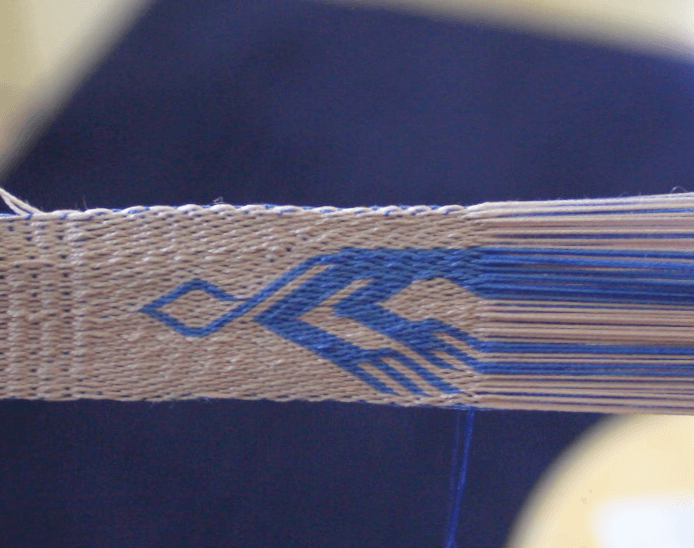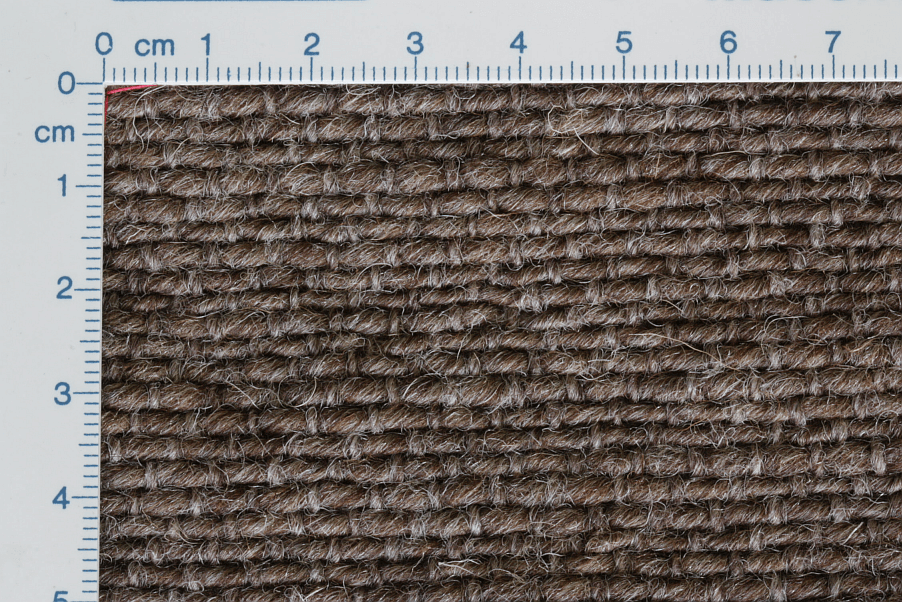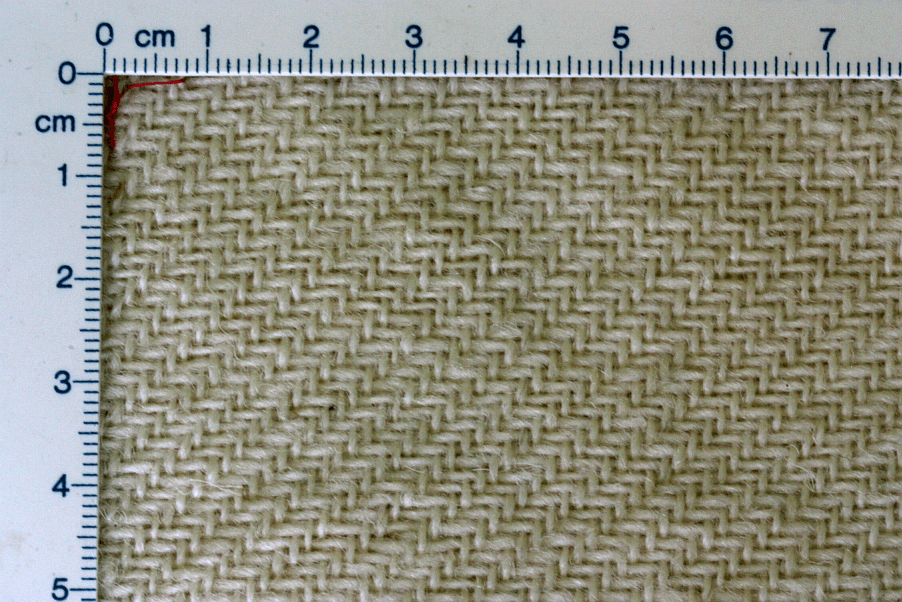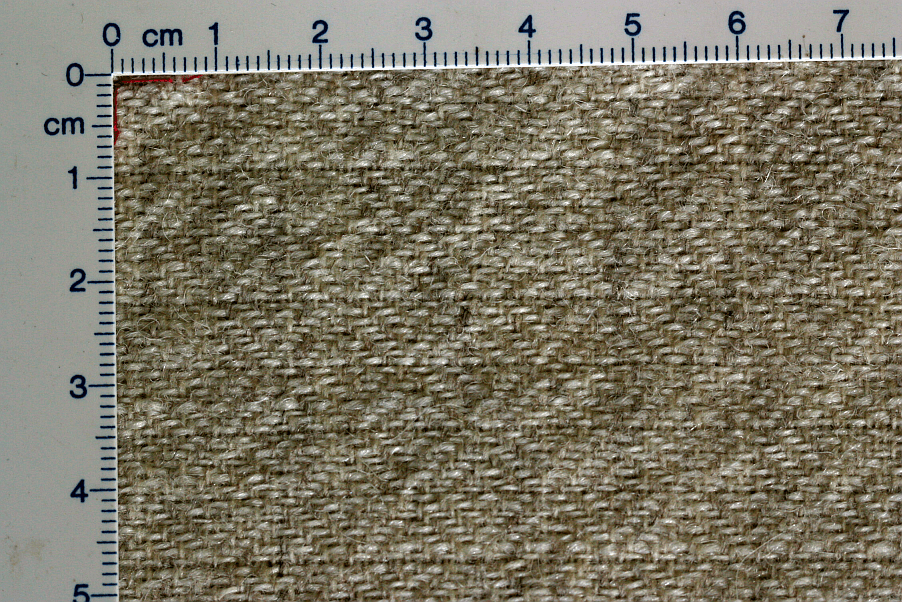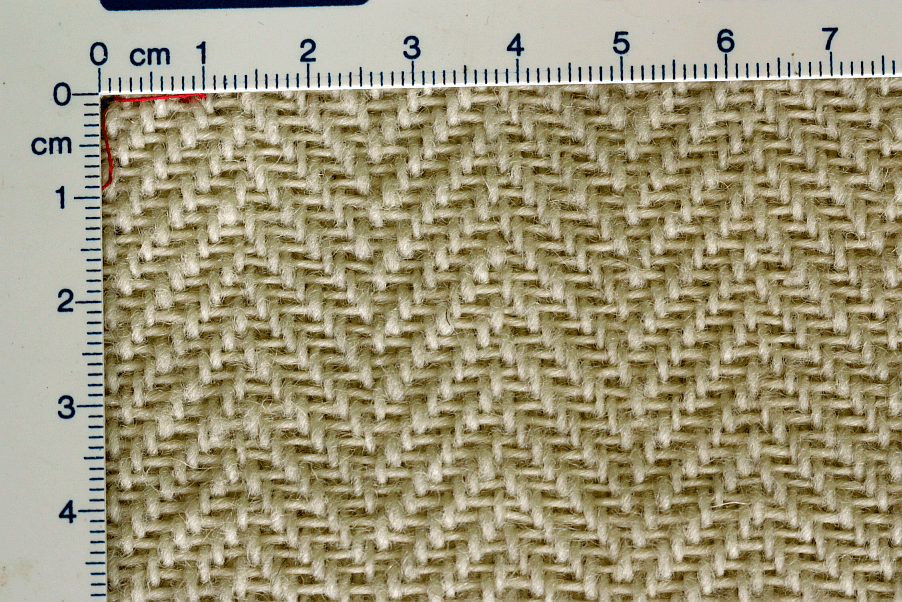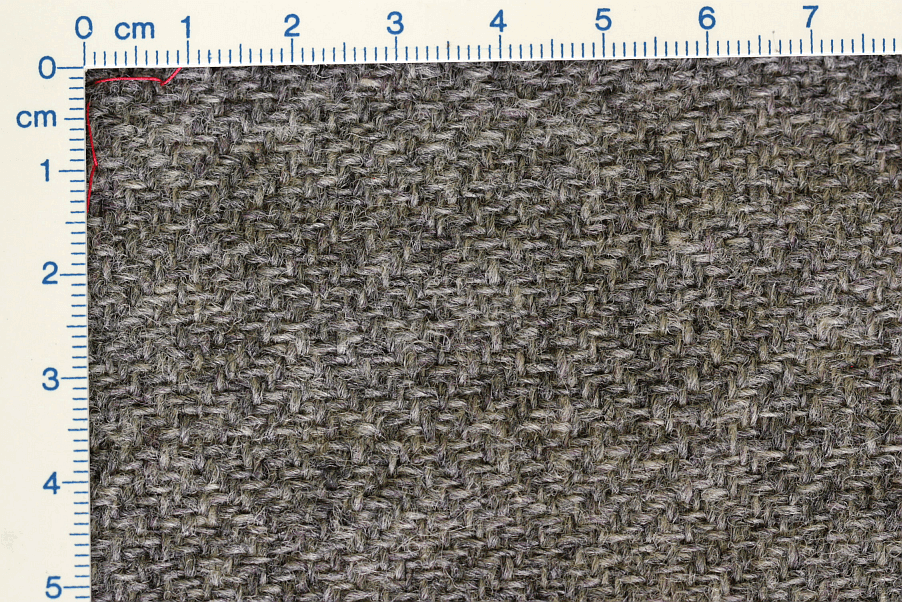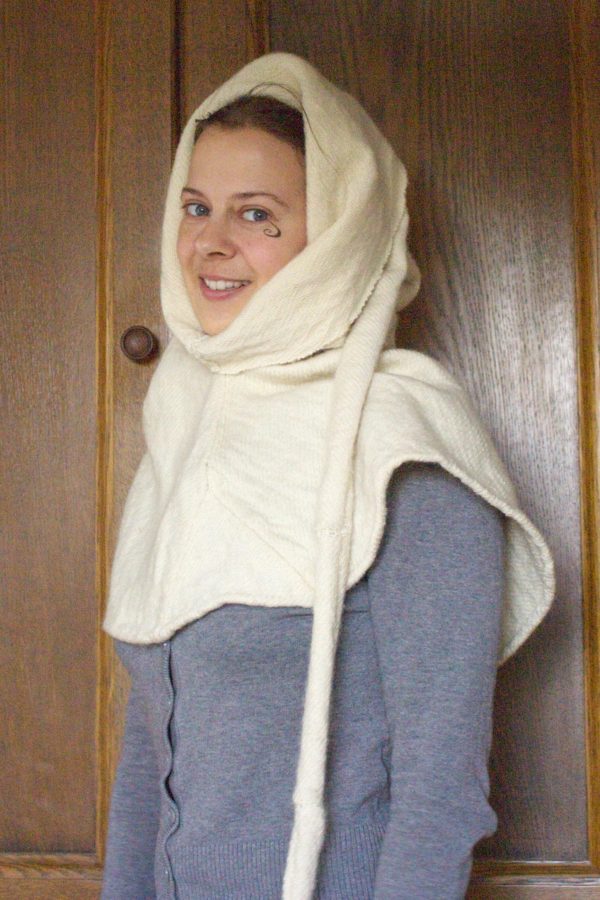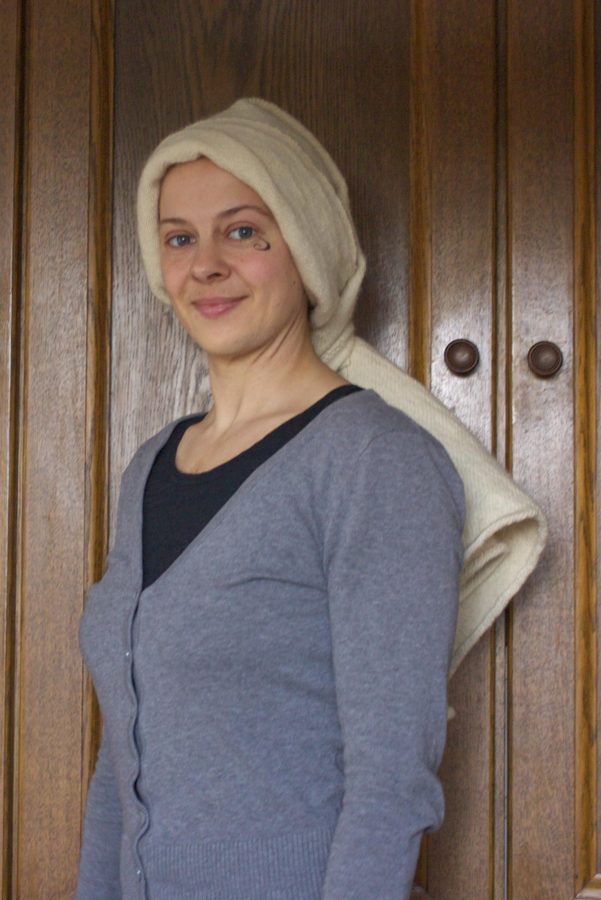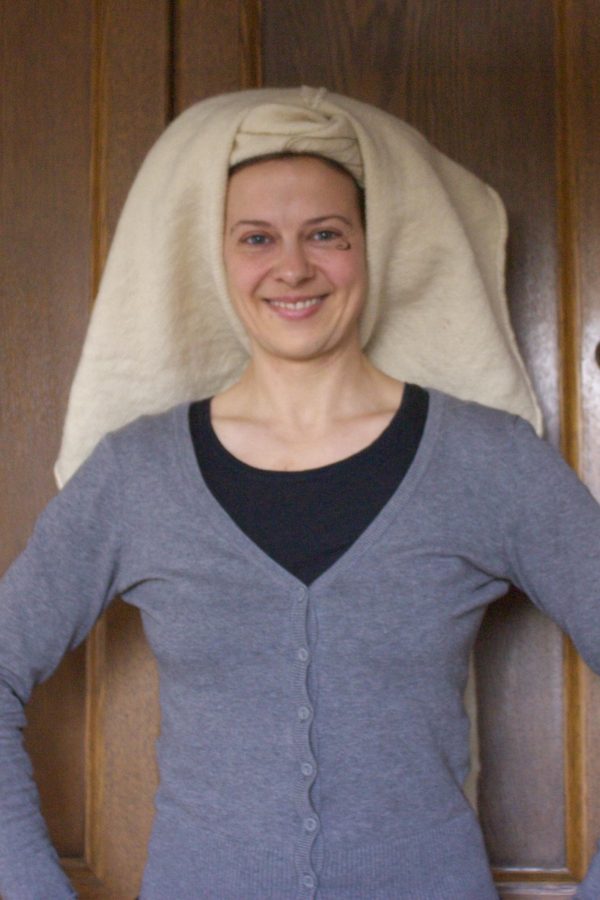There are so, so many open questions left around the man found in the Bernuthsfeld bog. Who was he? What was his job, if he had one? He definitely wasn't rich, but how poor was he?
There's also plenty of questions regarding his tunic... one of them being the colour question, as usual when some bog-brown textile is found. There was a dye analysis done, but the results were rather sketchy, with only quercetin found as a definitive dyestuff ingredient.
Well, we have a tunic that is put together from a lot of different pieces of fabric, most if not all of them already in their second, maybe even third or fourth use. Chances are very, very high that there were not only all kinds of fabrics, but also all kinds of colours... which we don't have definitive proof of.
Quercetin is, however, found in many different plants - among them woad (isatis tinctoria) and birch leaf. So for the reconstruction, we decided to leave some of the fabrics undyed (especially those with interesting natural wool colours), and to use birch and indigo (the latter rather sparingly) on others.
The nice thing about natural dyes is that you can get so many different hues from one plant that it won't be boring at all. So we were, after a lot of discussion and brainstorming and thinking, going for two different hues of blue, one double-dye of green (birch yellow with blue), and several different colours made with birch. For that, we did a nice little test run with pieces of fabric, all mordanted with 25% alum, then dyed in 200% dried birch leaf, then nuanced with iron, copper, iron plus cream of tartar, and potash. One of the yellow bits was dipped into an indigo vat, and then all of the candidates (except the yellow bit that went into the potash right away) were rinsed, split and half of them thrown into the potash brine over night.
The results were rather spectacular:
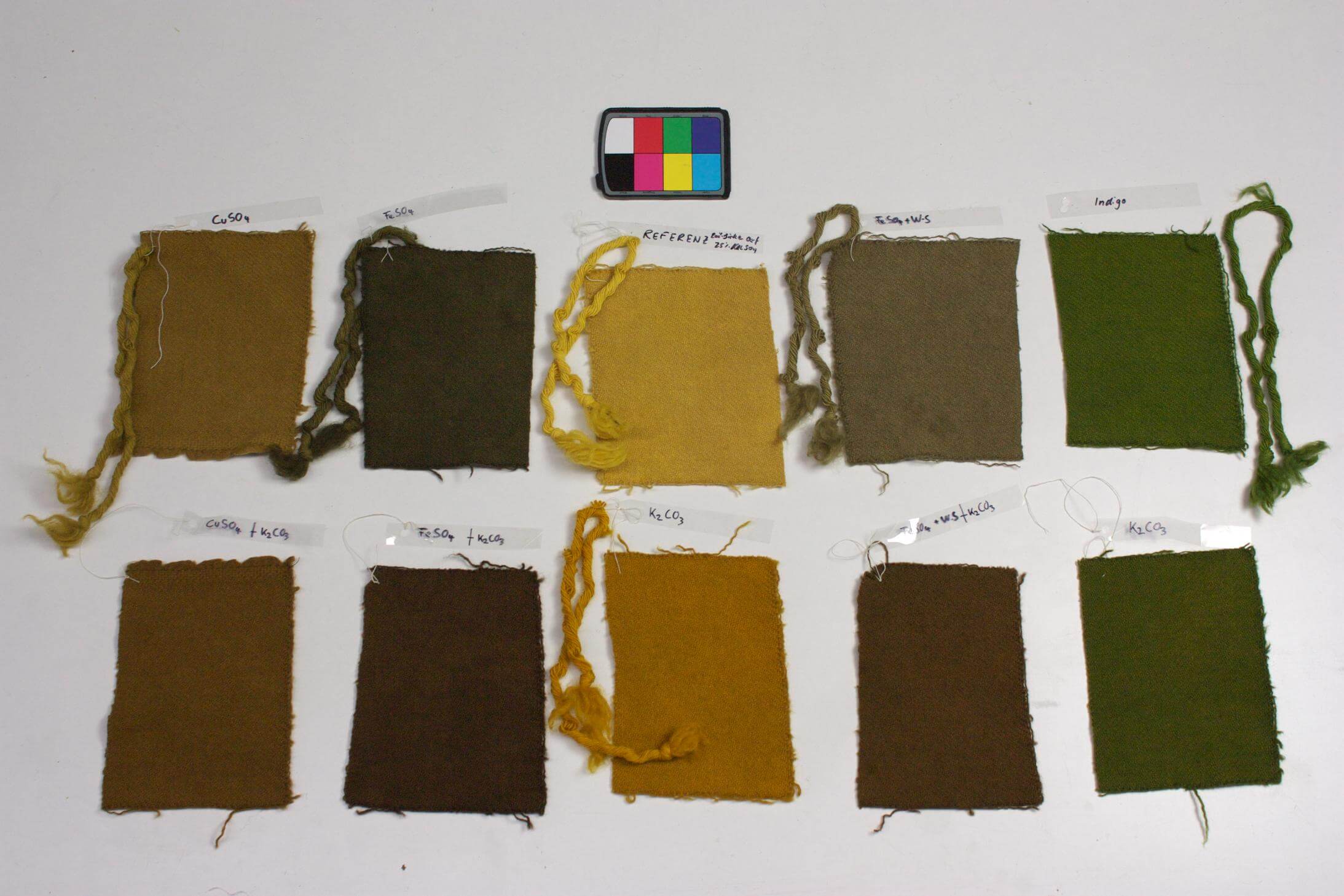
As usual, it's very hard to give a good impression of the colours on a photograph - natural dyes look very different in reality than on a picture, and they can even change hue depending on the light angle, let alone depending on light colour and quality. So you'll have to believe me that the green achieved by iron sulfate nuancing looks really green (until you hold it next to the indigo-on-yellow green, when it looks like someone dropped it into a mud puddle), that there's beautiful soft browns to be gotten with copper and that nuancing the yellow with potash gets you an orangey colour that is utterly, utterly beautiful.
Also as usual, the actual dye run yielded slightly different results to the test run - but we were both quite happy with the outcome, and the tunic reconstruction will look colourful enough to give an impression of the many colours in medieval times, yet will only have used two dyestuffs that we have hints for in the analysis.
Also also? Dyeing is fun.




